What is Suboxone?
Suboxone sublingual film is a prescription medicine used to treat adults who are addicted to (dependent on) opioid drugs (either prescription or illegal) as part of a complete treatment program that also includes counseling and behavioral therapy.
Suboxone sublingual film is a controlled substance (CIII) because it contains buprenorphine, which can be a target for people who abuse prescription medicines or street drugs. Keep your Suboxone sublingual film in a safe place to protect it from theft. Never give your Suboxone sublingual film to anyone else; it can cause death or harm them. Selling or giving away this medicine is against the law.
It is not known if Suboxone sublingual film is safe or effective in children.
What is the most important information I should know about Suboxone?
Important: Keep Suboxone in a secure place away from children. Accidental use by a child is a medical emergency and can result in death. If a child accidentally uses Suboxone sublingual film, get emergency help right away.
- Buprenorphine is a medicine in Suboxone sublingual film that can cause serious and life-threatening problems, especially if you take or use certain other medicines or drugs. Call your healthcare provider right away or get emergency help if you:
- feel faint or dizzy
- have mental changes such as confusion
- have slower breathing than you normally have
- have severe sleepiness
- have blurred vision
- have problems with coordination
- have slurred speech
- cannot think well or clearly
- have slowed reflexes
- have a high body temperature
- feel agitated
- have stiff muscles
- have trouble walking
These can be signs of an overdose or other serious problems.
- Do not switch from Suboxone sublingual film to other medicines that contain buprenorphine without talking with your doctor. The amount of buprenorphine in a dose of Suboxone sublingual film is not the same as the amount of buprenorphine in other medicines that contain buprenorphine. Your doctor will prescribe a starting dose of Suboxone sublingual film that may be different than other buprenorphine containing medicines you may have been taking.
- Suboxone sublingual film contains an opioid that can cause physical dependence.
- Do not stop taking Suboxone sublingual film without talking to your doctor. You could become sick with uncomfortable withdrawal signs and symptoms because your body has become used to this medicine.
- Physical dependence is not the same as drug addiction.
- Suboxone sublingual film is not for occasional or “as needed” use.
- An overdose and even death can happen if you take benzodiazepines, sedatives, tranquilizers, antidepressants, or alcohol while using Suboxone sublingual film. Ask your doctor what you should do if you are taking one of these.
- Call a doctor or get emergency help right away if you:
- Feel sleepy and uncoordinated
- Have blurred vision
- Have slurred speech
- Cannot think well or clearly
- Have slowed reflexes and breathing
- Do not inject (“shoot-up”) Suboxone sublingual film
- Injecting Suboxone may cause life-threatening infections and other serious health problems.
- Crushing and/or dissolving Suboxone sublingual film and then injecting it (“shooting up”) could cause serious precipitated withdrawal (sudden, serious, withdrawal symptoms such as pain, cramps, vomiting and diarrhea) in people who are physically dependent on other opioids.
- Snorting Suboxone sublingual film could cause precipitated withdrawal.
- In an emergency, have family members tell emergency department staff that you are physically dependent on an opioid and are being treated with Suboxone sublingual film.
- Never give anyone else your Suboxone sublingual film. They could die from taking it. Selling or giving away Suboxone ublingual film is against the law.
- Store Suboxone sublingual film securely, out of sight and reach of children, and in a location not accessible by others, including visitors to the home.
Who should not take Suboxone?
Do not take Suboxone sublingual film if you are allergic to buprenorphine or naloxone.
What should I tell my doctor before taking Suboxone?
Suboxone sublingual film may not be right for you. Before taking Suboxone sublingual film, tell your doctor if you:
- Have liver or kidney problems
- Have trouble breathing or lung problems
- Have an enlarged prostate gland (men)
- Have a head injury or brain problem
- Have problems urinating
- Have a curve in your spine that affects your breathing
- Have gallbladder problems
- Have adrenal gland problems
- Have Addison's disease
- Have low thyroid (hypothyroidism)
- Have a history of alcoholism
- Have mental problems such as hallucinations (seeing or hearing things that are not there)
- Have any other medical condition
- Are pregnant or plan to become pregnant. If you take Suboxone sublingual film while pregnant, your baby may have signs of opioid withdrawal at birth. Neonatal opioid withdrawal syndrome (NOWS) is an expected and treatable outcome of prolonged use of opioids during pregnancy. Talk to your doctor if you are pregnant or plan to become pregnant.
- Are breastfeeding or plan to breastfeed. Suboxone sublingual film can pass into your milk and may harm your baby. Talk to your doctor about the best way to feed your baby if you take Suboxone sublingual film. Monitor your baby for increased sleepiness and breathing problems.
Tell your doctor about all the medicines you take, including prescription and over-the- counter medicines, vitamins, and herbal supplements. Suboxone sublingual film may affect the way other medicines work, and other medicines may affect how Suboxone sublingual film works. Some medicines may cause serious or life-threatening medical problems when taken with Suboxone sublingual film.
Sometimes the doses of certain medicines and Suboxone sublingual film may need to be changed if used together. Do not take any medicine while using Suboxone until you have talked with your doctor. Your doctor will tell you if it is safe to take other medicines while you are taking Suboxone sublingual film.
Be especially careful about taking other medicines that may make you sleepy such as pain medicines, tranquilizers, antidepressant medicines, sleeping pills, anxiety medicines or antihistamines.
Know the medicines you take. Keep a list of them to show your doctor or pharmacist each time you get a new medicine.
How should I take Suboxone sublingual film?
- Always take Suboxone sublingual film exactly as your doctor tells you. Your doctor may change your dose after seeing how it affects you. Do not change your dose unless your doctor tells you to change it.
- Do not take Suboxone sublingual film more often than prescribed by your doctor.
- Take Suboxone sublingual film 1 time a day.
- When you are beginning treatment, take Suboxone sublingual film only under the tongue (sublingual administration).
- After a few days, you can choose whether you will take Suboxone film on the inside of your cheek (buccal administration) or by sublingual administration.
- Suboxone sublingual film must be taken whole. Do not cut, chew, or swallow Suboxone sublingual film.
- Your doctor should show you how to take Suboxone sublingual film the right way.
- Each Suboxone sublingual film comes in a sealed child-resistant foil pouch. Do not open the foil pouch until you are ready to use it.
Taking Suboxone sublingual film:
- To open your Suboxone sublingual film foil pouch, fold along the dotted line (See figure 1)
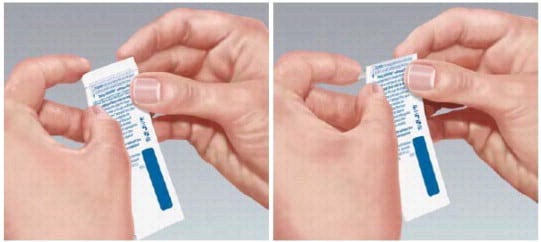
Figure 1
- Tear down at slit or cut with scissors along the arrow (see figure 2)
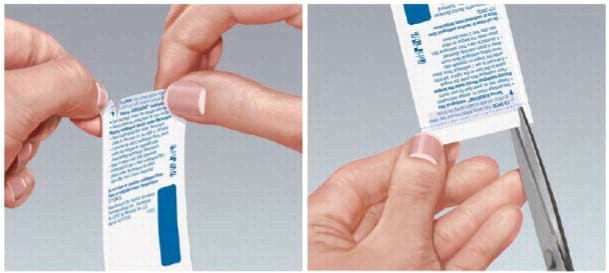
Figure 2
- Before taking Suboxone sublingual film, drink water to moisten your mouth. This helps the film dissolve more easily.
To take Suboxone sublingual film under your tongue (sublingual administration)
- Hold the film between two fingers by the outside edges.
- Place the Suboxone sublingual film under your tongue, close to the base either to the left or right of the center (see figure 3)
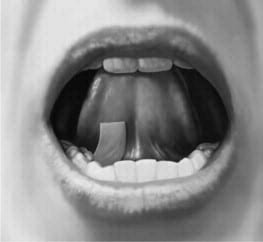
Figure 3
- If your doctor tells you to take 2 films at a time, place the second film under your tongue on the opposite side. Avoid letting the films touch.
- Keep the films in place until they have completely dissolved.
- If your doctor tells you to take a third film, place it under your tongue on either side after the first 2 films have dissolved.
To take Suboxone sublingual film on the inside of your cheek (buccal administration)
- Hold the film between two fingers by the outside edges.
- Place one film on the inside of your right or left cheek (see figure 4)
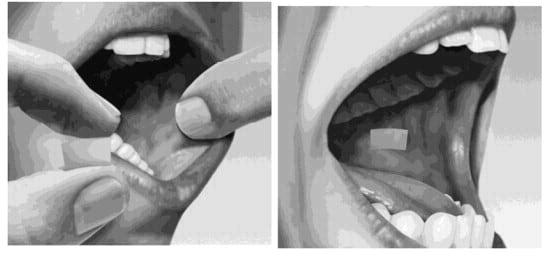
Figure 4
- If your doctor tells you to take 2 films at a time, place the other film on the inside of the opposite cheek.
- Keep the films in place until they have completely dissolved.
- If your doctor tells you to take a third film, place it on the inside of your right or left cheek after the first 2 films have dissolved.
- While Suboxone sublingual film is dissolving, do not chew or swallow the film because the medicine will not work as well.
- Talking while the film is dissolving can affect how well the medicine in Suboxone sublingual film is absorbed.
- If you miss a dose of Suboxone sublingual film, take your medicine when you remember. If it is almost time for your next dose, skip the missed dose and take the next dose at your regular time. Do not take 2 doses at the same time unless your doctor tells you to. If you are not sure about your dosing, call your doctor.
- Do not stop taking Suboxone sublingual film suddenly. You could become sick and have withdrawal symptoms because your body has become used to the medicine. Physical dependence is not the same as drug addiction. Your doctor can tell you more about the differences between physical dependence and drug addiction. To have fewer withdrawal symptoms, ask your doctor how to stop using Suboxone the right way.
- If you take too much Suboxone sublingual film or overdose, call Poison Control or get emergency medical help right away.
What should I avoid while taking Suboxone?
- Do not drive, operate heavy machinery, or perform any other dangerous activities until you know how this medication affects you. Buprenorphine can cause drowsiness and slow reaction times. This may happen more often in the first few weeks of treatment when your dose is being changed, but can also happen if you drink alcohol or take other sedative drugs when you take Suboxone sublingual film.
- You should not drink alcohol while using Suboxone sublingual film, as this can lead to loss of consciousness or even death.
What are the possible side effects of Suboxone?
Suboxone sublingual film can cause serious side effects, including:
- See “What is the most important information I should know about Suboxone?”
- Respiratory problems. You have a higher risk of death and coma if you take Suboxone sublingual film with other medicines, such as benzodiazepines.
- Sleepiness, dizziness, and problems with coordination
- Dependency or abuse
- Liver problems. Call your doctor right away if you notice any of these signs of liver problems:
- your skin or the white part of your eyes turning yellow (jaundice)
- urine turning dark
- stools turning light in color
- you have less of an appetite
- you have stomach (abdominal) pain or nausea
Your doctor should do tests before you start taking and while you take Suboxone sublingual film.
- Allergic reaction. You may have a rash, hives, swelling of the face, wheezing, or a loss of blood pressure and consciousness. Call a doctor or get emergency help right away.
- Opioid withdrawal. This can include: shaking, sweating more than normal, feeling hot or cold more than normal, runny nose, watery eyes, goose bumps, diarrhea, vomiting, and muscle aches. Tell your doctor if you develop any of these symptoms.
- Decrease in blood pressure. You may feel dizzy if you get up too fast from sitting or lying down.
Common side effects of Suboxone sublingual film include:
- Nausea
- Vomiting
- Drug withdrawal syndrome
- Headache
- Sweating
- Numb mouth
- Constipation
- Swollen and/or painful tongue
- The inside of your mouth is more red than normal
- Intoxication (feeling lightheaded or drunk)
- Disturbance in attention
- Irregular heart beat (palpitations)
- Decrease in sleep (insomnia)
- Blurred vision
- Back pain
- Fainting
- Dizziness
- Sleepiness
Tell your doctor about any side effect that bothers you or that does not go away.
These are not all the possible side effects of Suboxone sublingual film. For more information, ask your doctor or pharmacist.
Call your doctor for medical advice about side effects. You may report side effects to FDA at 1- 800-FDA-1088.
Suboxone Images
-
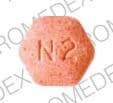
Suboxone buprenorphine hydrochloride 2 mg (base) / naloxone hydrochloride 0.5 mg (base) -
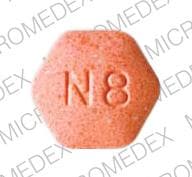
Suboxone buprenorphine hydrochloride 8 mg (base) / naloxone hydrochloride 2 mg (base) -
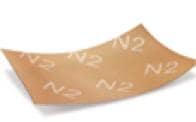
Suboxone buprenorphine hydrochloride 2 mg (base) / naloxone hydrochloride 0.5 mg (base) -
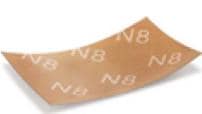
Suboxone buprenorphine hydrochloride 8 mg (base) / naloxone hydrochloride 2 mg (base)
General information about the safe and effective use of Suboxone
Medicines are sometimes prescribed for purposes other than those listed in a Medication Guide. Do not take Suboxone sublingual film for a condition for which it was not prescribed. Do not give Suboxone sublingual film to other people, even if they have the same symptoms you have. It may harm them and it is against the law.
This Medication Guide summarizes the most important information about Suboxone sublingual film. If you would like more information, talk to your doctor or pharmacist. You can ask your doctor or pharmacist for information that is written for health professionals. For more information, call 1‐877‐782‐6966.
How should I store Suboxone?
- Store Suboxone sublingual film at room temperature between 68°F to 77°F (20°C to 25°C).
- Keep Suboxone sublingual film in a safe place, out of the sight and reach of children.
How should I dispose of unused Suboxone?
- Dispose of unused Suboxone sublingual film as soon as you no longer need them.
- Dispose of expired, unwanted or unused Suboxone sublingual film by removing the Suboxone sublingual film from the foil packaging, and promptly flushing down the toilet (if a drug take-back option is not readily available). Do not flush the Suboxone sublingual film foil pouch down the toilet. Visit www.fda.gov/drugdisposal for additional information on disposal of unused medicines
If you need help with disposal of Suboxone sublingual film, call 1-877-782-6966.
What are the ingredients in Suboxone?
Active ingredients: buprenorphine and naloxone.
Inactive ingredients: polyethylene oxide, hydroxypropyl methylcellulose, maltitol, acesulfame potassium, lime flavor, citric acid, sodium citrate, FD&C yellow #6, and white ink.
For more information, go to www.SUBOXONE.com or call 1-877-782-6966.




